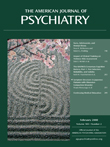Antidepressants in the Postpartum Period: Additional Considerations
To The Editor: We read with interest the article by Jennifer L. Payne, M.D., published in the September 2007 issue of the Journal , on practical considerations of antidepressant use postnatally (1) . However, as developers of the United Kingdom National Clinical Guideline on Antenatal and Postnatal Mental Health (2) , we found the article to be inaccurate in several respects.
We agree that maintaining drugs started during pregnancy in the postnatal period is appropriate but feel that this means that paroxetine, although virtually undetectable in breast milk, should not be given to a woman who wishes to breast-feed, given the concern over its safety in pregnancy (3 , 4) and the possible difficulties on withdrawal.
While monitoring a breastfed infant is important, the additional point should be made that neonates whose mothers took antidepressants during pregnancy should also be monitored both for symptoms of withdrawal from the drug and for serotonergic toxicity syndrome (the symptoms are similar) (2 , 5) .
After a careful review of the available data, we concluded that “indicated” prevention may benefit women with subthreshold symptoms of depression or anxiety, although the Cochrane review on the prevention of postnatal depression concluded that this is not effective (6) . Evidence on the risk to the fetus of chronic subthreshold anxiety during pregnancy influenced our decision (7) .
Dr. Payne gives only limited consideration of psychological therapies, but these are equally effective and safer than medication, particularly in less severe depression (8) . We recommended that psychological treatments should be offered without delay in order to avoid the risks associated with antidepressants where this is appropriate (2) . The considerable reluctance of many pregnant women to take medication influenced this decision.
Finally, antidepressants are used to treat a range of disorders in addition to depression, particularly anxiety disorders. Psychological treatments are often appropriate in these disorders and should be offered in place of antidepressants where appropriate (2) .
1. Payne JL: Antidepressant use in the postpartum period: practical considerations. Am J Psychiatry 2007; 164:1329–1332Google Scholar
2. National Institute for Clinical Excellence: Antenatal and Postnatal Mental Health: Clinical Management and Service Guidance, Clinical Guideline No. 47. London, NICE, 2007Google Scholar
3. Chambers CD, Hernandez-Diaz S, Van Marter LJ, Werler MM, Louik C, Jones KL, Mitchell AA: Selective serotonin-reuptake inhibitors and risk of persistent pulmonary hypertension of the newborn. N Engl J Med 2006; 354:579–587Google Scholar
4. National Teratology Information Service: Use of Paroxetine in Pregnancy. Newcastle, Australia, Regional Drug and Therapeutics Centre, NTIS, 2005Google Scholar
5. Haddad PM, Pal BR, Clarke P, Wieck A, Sridhiran S: Neonatal symptoms following maternal paroxetine treatment: serotonin toxicity or paroxetine discontinuation syndrome? J Psychopharmacol 2005; 19:554–557Google Scholar
6. Dennis CL: Psychosocial and psychological interventions for prevention of postnatal depression: systematic review. BMJ 2005; 331:15Google Scholar
7. Van den Bergh BR, Mulder EJ, Mennes M, Glover V: Antenatal maternal anxiety and stress and the neurobehavioural development of the fetus and child: links and possible mechanisms (review). Neurosci Biobehav Rev 2005; 29:237–258Google Scholar
8. National Collaborating Centre for Mental Health: Depression: Management of Depression In Primary and Secondary Care. London, Royal College of Psychiatrists and British Psychological Society, 2005Google Scholar



